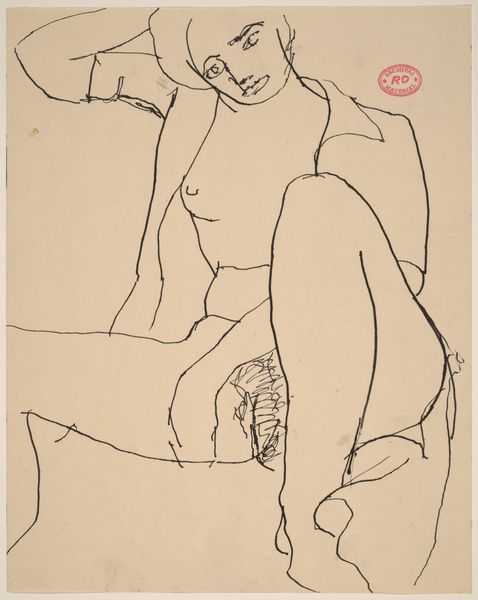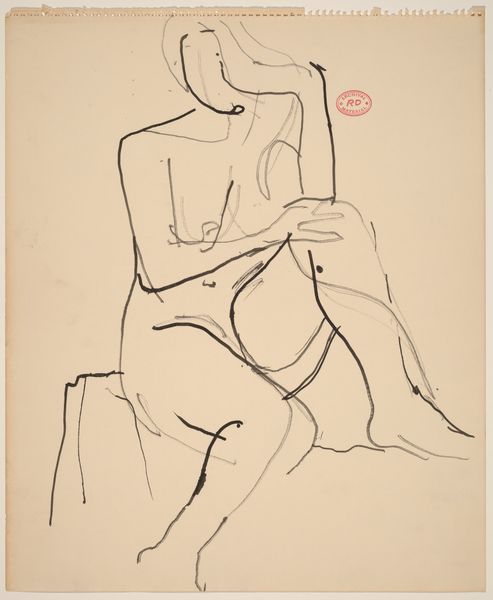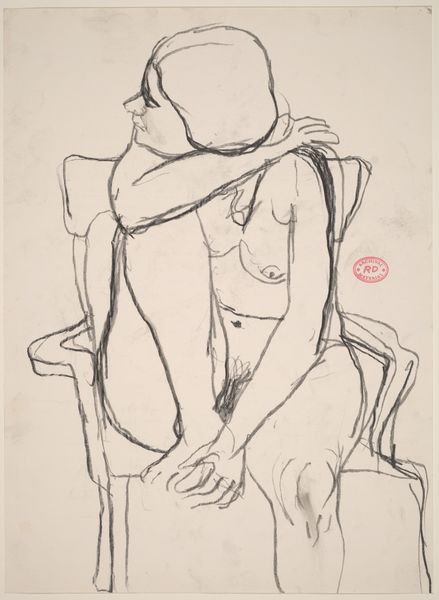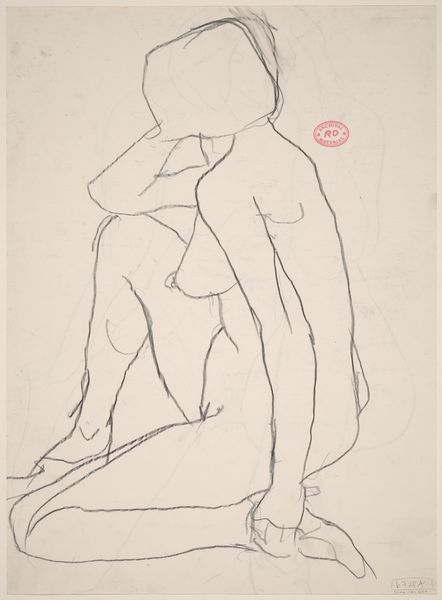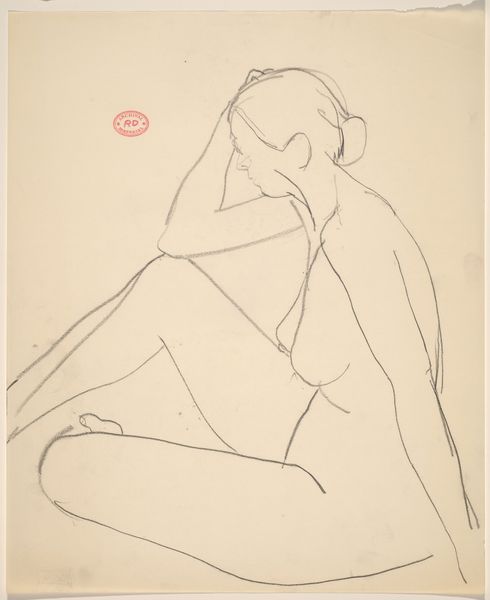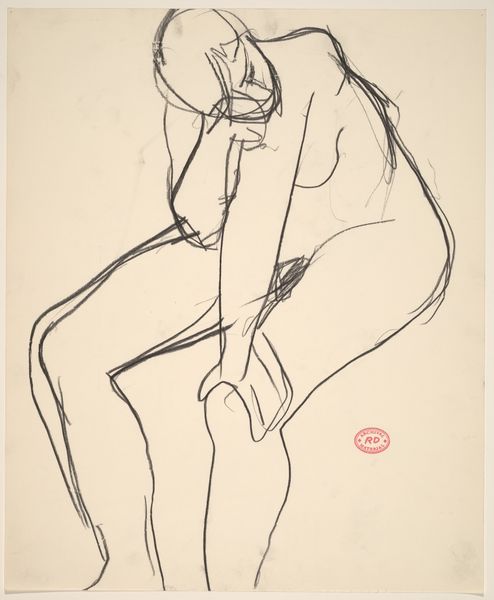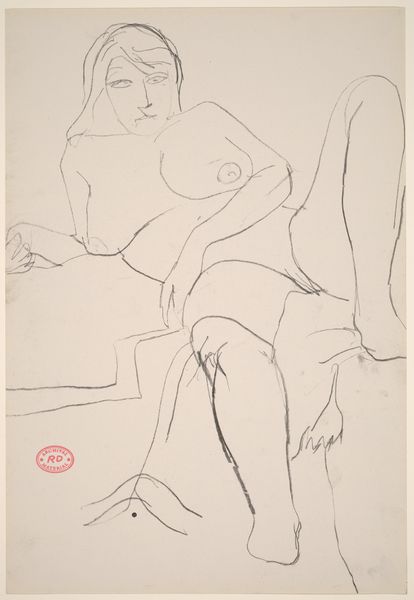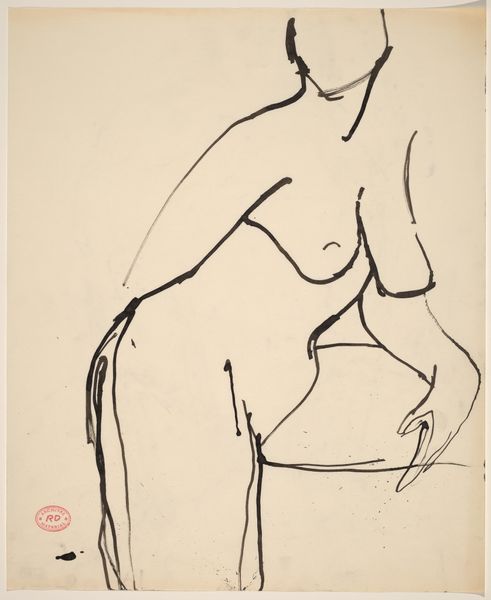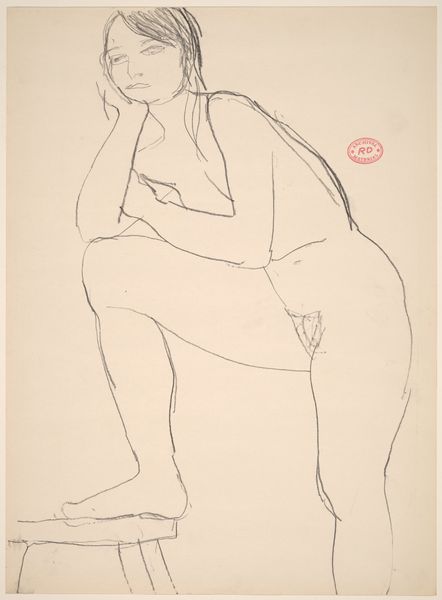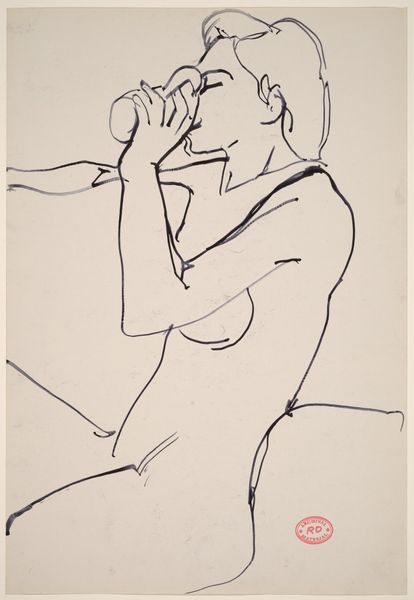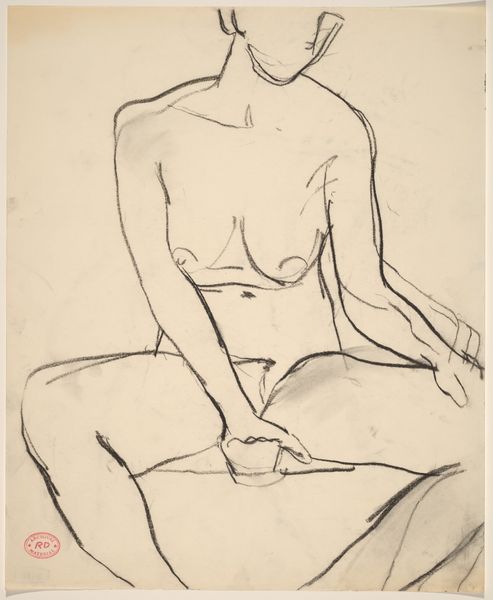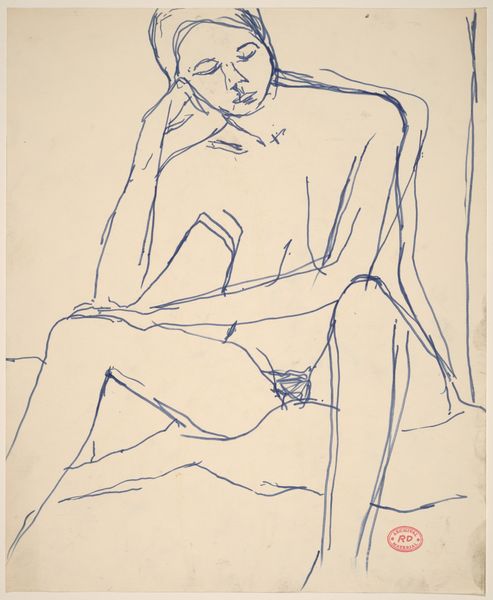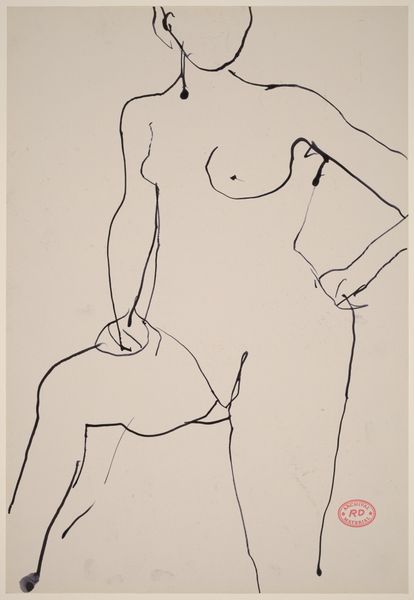![Untitled [seated female nude holding a cup] by Richard Diebenkorn](/_next/image?url=https%3A%2F%2Fd2w8kbdekdi1gv.cloudfront.net%2FeyJidWNrZXQiOiAiYXJ0ZXJhLWltYWdlcy1idWNrZXQiLCAia2V5IjogImFydHdvcmtzL2RkYzEzNDM4LTAxM2EtNDc5NS1hYzZkLTdhMmM0MjMxOTcyMC9kZGMxMzQzOC0wMTNhLTQ3OTUtYWM2ZC03YTJjNDIzMTk3MjBfZnVsbC5qcGciLCAiZWRpdHMiOiB7InJlc2l6ZSI6IHsid2lkdGgiOiAxOTIwLCAiaGVpZ2h0IjogMTkyMCwgImZpdCI6ICJpbnNpZGUifX19&w=3840&q=75)
drawing, charcoal
#
portrait
#
abstract-expressionism
#
drawing
#
ink drawing
#
figuration
#
bay-area-figurative-movement
#
charcoal
#
northern-renaissance
#
nude
Dimensions: sheet: 43.2 x 31.8 cm (17 x 12 1/2 in.)
Copyright: National Gallery of Art: CC0 1.0
Editor: We’re looking at Richard Diebenkorn's "Untitled [seated female nude holding a cup]," a charcoal and ink drawing made sometime between 1955 and 1967. It feels very raw and immediate, almost like a quick sketch. What jumps out at you when you look at it? Curator: The deliberate choice of charcoal and ink in this drawing is fascinating. Both are accessible, almost ubiquitous materials. Consider the process: Diebenkorn is using tools readily available, perhaps even inexpensive, to render the human form. There’s an emphasis here on the act of making, of imbuing simple materials with artistic value. What do you make of that directness? Editor: I hadn't really considered that. I guess I just saw the sketchiness as a stylistic choice. So, you’re saying the *materials* themselves contribute to the meaning? Curator: Precisely. Think about the cultural implications. In this period, what was the status of drawing versus painting? Was drawing seen as preparatory, a lesser form? And what about the nude – a historically loaded subject. Does Diebenkorn challenge the traditionally elevated status of the nude through the work's creation process, grounding it with everyday materials? What social and economic factors influenced Diebenkorn’s material choices? Editor: So, instead of focusing on the beauty or skill traditionally associated with a nude drawing, we're thinking about the socioeconomic aspects of its production... like how readily available those materials might have been influencing Diebenkorn. I never would have thought to look at it that way! Curator: It's about excavating the material realities beneath the surface of representation. We need to consider all of it to unpack the layers of meaning imbued within. Editor: That's such a fresh approach. I'm starting to see how focusing on the materials really opens up new ways of understanding art!
Comments
No comments
Be the first to comment and join the conversation on the ultimate creative platform.
